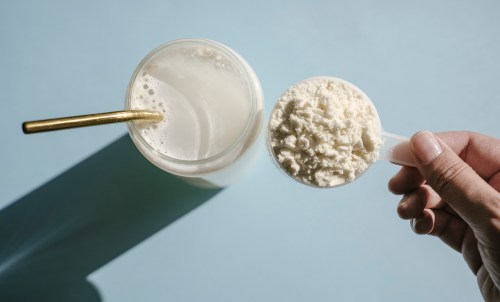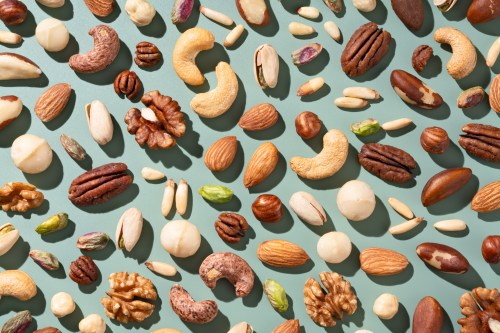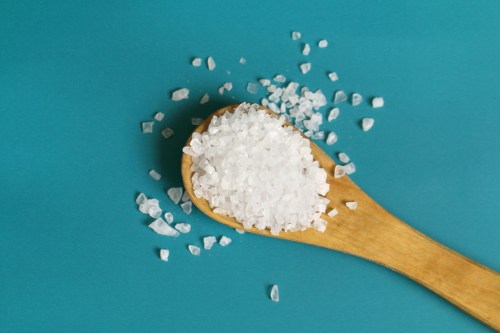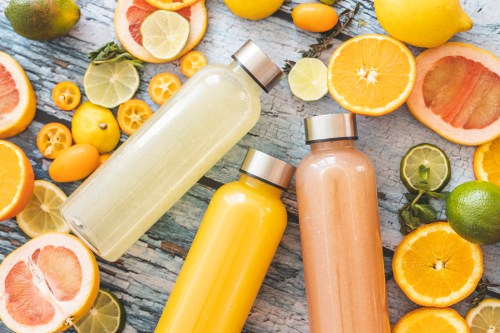Our editors independently select these products. Making a purchase through our links may earn Well+Good a commission
While it’s a pretty universal habit to keep your condiments in the fridge door and veggies in the crisper, the rest of the refrigerator can be a free for all. Should you arrange everything by color like in the inspirational fridge photo you just double-tapped on Instagram? Put your fruit front and center so you don’t forget to actually eat it? Should your leftovers go in the front of the fridge or the back?
Experts in This Article
creator of Hello Nutritarian and author of Fridge Love
As a professional fridge organizer, meal prepper, and author of the new book Fridge Love ($18), these are questions Kristen Hong gets a lot. She’s a firm believer that having a well-organized fridge is key for eating nutrient-rich meals on a regular basis—and that goes double if you’re super busy or cooking for a whole household. But something she says many people don’t even think about when it comes to setting up their refrigerator is the fridge’s warm and cold zones. Knowing these zones, she says, is key for meal prepping success.
What even are fridge warm and cold zones?
Simply put, warm and cold zones are areas inside the fridge that are slightly warmer or colder than the overall temperature. In general, your refrigerator should be at or below 40°F. But there are areas in the fridge that will be above or below this, based upon the system’s airflow.
Hong says that identifying your fridge’s warm and cold zones depends on what type of fridge you have. “Since people have different types of refrigerators, it’s very difficult to give blanket advice that can apply to everyone,” she says. That being said, Hong says most people have one of three types of refrigerators: basic freezer-top fridges (where the freezer is at the top of the fridge, and cool air is pushed along the back wall of the fridge compartment), side-by-side fridges (with a freezer on one side and the refrigerator on the other, with air flowing side to side), and French-door models (which have a more targeted airflow release).
According to Hong, French-door models have a more uniform temperature throughout, and therefore don’t often have warm and cold zones (or at least not much of ones to really worry about). But if you have one of the other two types of fridges, it’s time to pay attention. “Cold zones for freezer-top refrigerators tend to be at the very back of the fridge. Also, the top shelf is the coldest and the bottom shelves are the warmest,” Hong says. Side-by-side fridges, she says, tend to be coldest in the middle and directly above the crisper drawers with the top shelf being the warmest. For most fridges, the crisper drawers have their own separate air flow system or temperature controls, making them a colder zone with more humidity for keeping produce fresh.
There are other factors besides what type of fridge you have to think about too. For example, Hong says if you live someplace with a hot or humid temperature, this will impact the items in the front of the fridge more than someone who lives somewhere more moderate because every time you open the fridge door, a blast of warm air will waft inside.
Okay, now that you know how to identify your fridge warm and cold zones, let’s get into why it matters and is key for meal prep.
Why knowing your fridge warm and cold zones is key for meal prep success
The whole point of meal prepping is to have enough food ready to just heat and eat for several days. Hong says she herself meal preps for between seven and nine days. “Understanding where your warm and cold zones are is essential because the colder the temperature you store something, the longer it will last,” Hong says. For this reason, she says you should put the foods you want to eat first at the front of the fridge because they are going to go bad before the foods in the back.
Let’s say that you baked sweet potatoes and rice to eat earlier in the week and you also pre-made some turkey meatballs to eat at the end of the week. Taking Hong’s advice into account, you’ll want to keep your meatballs in the coldest part of the fridge, in the back and either the top shelf (if you have a freezer-top fridge) or the middle shelf (if you have a side-by-side fridge), because the cold temperature will help them last longer than in a warm zone.
Besides the food you’ve already prepped, Hong says it’s important to consider the warm and cold zones for figuring out where to store fresh produce too. In her book, she has an entire section dedicated to this because different fruits and vegetables have different temperature requirements—including some that shouldn’t be stored in the fridge at all. But one general tip to keep in mind is that greens need moisture to stay fresh as long as possible, so they should be stored in a container in a cold zone, like the crisper drawer. “Berries I also would keep in a cold zone because they need moisture, too,” Hong says.
As you’ve probably noticed, the fridge door is a warm zone for most refrigerators. This is why it makes sense to store condiments here; they are made to last for a long time. “You can also store bottled drinks, bread, pita wraps, or other foods that could also potentially be stored in the pantry,” Hong says, adding that moving something from the pantry to the fridge door will give it a longer shelf life. The last major fridge item Hong says to be mindful of is anything with dairy. “Since dairy spoils easier than other types of items, you want to keep it in a cold zone—not the door,” she says.
To recap our fridge organization 101 lesson, warm zones are best for storing condiments, foods that could survive in the pantry, and meal prepped items you plan on eating relatively soon. Save your cold zones for dairy, produce requiring moisture, and meal-prepped foods you don’t plan on eating right away.
When you keep these tips in mind, not only will it help you stay organized and cut down on time figuring out what to eat, it will also minimize food waste. It just might be such a game-changer that you’ll be inspired to post your own fridge shelfie on Instagram.
Oh hi! You look like someone who loves free workouts, discounts for cutting-edge wellness brands, and exclusive Well+Good content. Sign up for Well+, our online community of wellness insiders, and unlock your rewards instantly.
Sign Up for Our Daily Newsletter
Get all the latest in wellness, trends, food, fitness, beauty, and more delivered right to your inbox.
Got it, you've been added to our email list.











